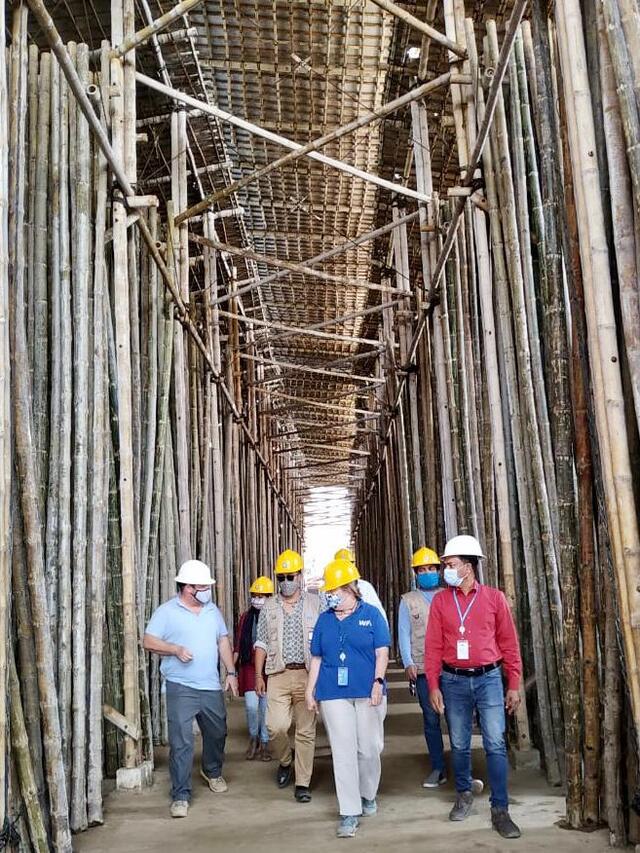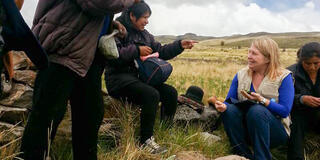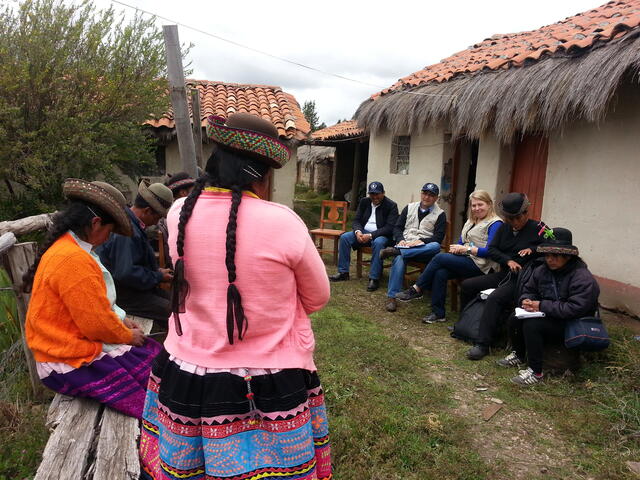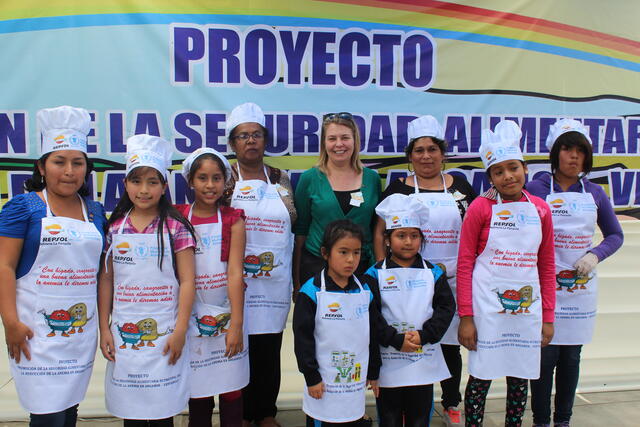
Ending Hunger, Fostering Peace

Cox’s Bazar, known locally as Panowa, is a coastal town in southeastern Bangladesh, about 15 miles from neighboring Myanmar. (The town’s English name is a relic of Britain’s colonial regime.) It’s a fishing center and one of the country’s top tourist destinations, drawing throngs to its 93 unbroken miles of sandy beaches dotted with colorful umbrellas.

The continuous stretch of beach, one of the longest anywhere on earth, is a marvel. But in recent years Cox’s Bazar has also become known for another distinction: the city is now home to the Kutupalong refugee camp, the world’s largest.
Today the camp is mostly inhabited by Rohingya refugees, who are fleeing ethnic and religious persecution in Rakhine state, just across the Myanmar border. It was here that Sheila Grudem MIA ’94 arrived in July 2020, just as COVID-19 lockdown restrictions were beginning to lift. Th e World Food Programme’s office, of which Grudem is in charge, is responsible for feeding over 850,000 refugees every day, three times a day.
It may seem like a daunting task, but Grudem, WFP’s senior emergency coordinator and head of field office in Cox’s Bazar, has worked for more than 25 years in development and humanitarian aid. She’s had diverse experiences around the world, spending the majority of her career with the organization.
As of 2020, she could also add Nobel Prize winner to her résumé: the organization received the Nobel Peace Prize last October.
* * *
Originally from Anaheim, California, Grudem has been interested in refugee issues for a long time. After studying international relations at the University of the Pacific in her home state, one of her first experiences abroad was as a Peace Corps volunteer in Belize, where she worked with refugees from Guatemala and El Salvador. “That’s what really solidified my desire to go to SIPA,” Grudem says.
At the School, Grudem focused on human rights and economic development in refugee communities. She also seized an opportunity to travel to Colombia to work on a project involving public-private partnerships, which were just gaining steam at the time. “I realized strengths that I didn’t know I necessarily had,” Grudem says.
After graduating from SIPA, Grudem sent her résumé to every organization she could think of. (“I had school loans to pay!” she notes.) She found her first position in Angola, which was then in the midst of a 27-year civil war. “So you dropped a girl from Disneyland in the middle of a war in Angola,” she says. “That’s how I started.”
Grudem had joined the UN’s Office for the Coordination of Humanitarian Affairs and worked mostly with people displaced by the war. She was also in charge of working with national NGOs, a role that forced her to learn Portuguese. “It was jumping in with both feet and a high learning curve,” she says.
But she recommends the same kind of introduction to any student seeking a similar career path. “You learn fast, and you also learn quickly whether or not you like to do the work,” she says. “You don’t waste time.”
It was also in Angola that Grudem first worked with UN colleagues in WFP and started to like what the organization does.
* * *

Grudem’s career has taken her to both long-term posts and short-term duties around the globe: helping out with cyclone relief in Mozambique, working with refugees in Ethiopia, conducting policy work at WFP’s headquarters in Rome, serving as deputy country director in Tanzania. From 2013 to 2016, she worked as a country director in Peru, where she supported the development of nutrition programs, such as promoting recipes for dishes made with iron-rich chicken blood.
Moving from country to country, Grudem often found herself switching between development work and emergency relief work, distinct competencies that, she says, call for different but overlapping skills. For Grudem, development work is slower-paced and requires intellectually sound expertise and analysis. Emergency relief work, on the other hand, gets her adrenaline pumping—it involves making quick decisions in high-pressure situations with imperfect information.
In a conversation with SIPA Magazine, Grudem offered a few pieces of advice for students seeking a career in the humanitarian sector.
She underscored that teamwork is critical, especially in emergency work, other high-stress situations, and anywhere you don’t know the local language. “Be respectful to your colleagues,” she says, and “always remember to take deep breaths.”
Attitude is another key to Grudem’s success in the field. She encourages students to be willing to learn and feel out of place and to not set your sights on just one organization—there’s value in gaining experience at many different places. Be open to pursuing what interests you and what makes you feel like you have a purpose, Grudem says.
She also says to get to know both the people you assist and the people you work with. Finding the right fit is about knowing not only what job but also what community will make you enjoy going to work every day. “I wanted to work with the World Food Programme,” Grudem says, “because I liked the people working for WFP the most.”
* * *

When it recognized WFP last year, the Nobel committee cited the organization “for its efforts to combat hunger, for its contribution to bettering conditions for peace in conflict-affected areas, and for acting as a driving force in efforts to prevent the use of hunger as a weapon of war and conflict.”
“It feels humbling,” Grudem says. “And it’s an honor. I’ve worked for WFP for 20 years, so it really feels like I’m part of that.”
Hunger had skyrocketed due to the COVID-19 pandemic, so the Nobel represented a welcome recognition in a difficult year. For Grudem, it was also heartening to see the Nobel committee acknowledge the link between food assistance and peace. “I tell people, if you want to end food insecurity, end conflict,” she says. “And work on climate change,” she adds, noting that Bangladesh is especially vulnerable to the looming threat of climate disaster.
At Grudem’s current post, WFP works on a number of local environmental initiatives. When the Rohingya first started coming over, the Cox’s Bazar area was a national forest susceptible to landslides. WFP used rapidly deployable methods like cement and culverts to stabilize the land, and deforestation made way for temporary homes. Eventually, “there was one tree left,” Grudem says. “The famous one tree.” But recent reforestation efforts have created a cooler and more appealing environment for refugees and locals, and trees serve as a more natural means of stabilizing the landslide-prone terrain.
To handle the COVID-19 pandemic, WFP implemented safety measures like remote monitoring and cutting back on the number of staff visiting the camps. In addition, the office’s recently redesigned ways of providing food assistance helped mitigate the impacts of the pandemic.
Cox’s Bazar has been at the forefront of innovation for a while, Grudem says. Instead of directly providing food assistance, WFP gives out cash, a system that hasn’t been implemented on such a large scale before. Recipients can then choose and purchase their own food in a grocery store–like experience. WFP partners with local traders and farmers to provide this food, which includes fresh produce on top of traditional dry goods like rice, beans, and wheat.
In addition, the operation uses blockchain technology for its electronic payment system, which makes food distribution more efficient and secure. This is a huge leap from just 5 to 10 years ago, when Excel sheets and even paper logs were the norm. “It really is kind of the future of humanitarian assistance,” Grudem says.
These innovations also help to recognize the dignity of refugees and create a better environment to live in. Grudem says that the trauma of refugees and their need for social support have been more widely acknowledged in recent times.
“When refugees first come over, it’s tragic,” she says. “These people are crossing the border, they’re fleeing conflict—they’re trying to stay alive.” After a few years, fatigue can set in. In the future, besides the need for diplomacy and broader political change in the region, Grudem foresees the challenge of keeping donors and funders engaged so that WFP can continue operations.
Along with providing daily meals to the refugee camp and working on environmental projects, the WFP office in Cox’s Bazar helps provide school lunches in Bangladesh, supports alternative livelihoods throughout the country, and even hosts a surfing club for local children.
Growing up, Grudem never expected to live abroad for quite so long. But she has now worked in Latin America, Asia, Africa, and Europe and says that the Middle East is still on her list.
“I always thought I would move back to the US,” Grudem says, “but I’ve continued to live overseas this entire time because I keep having fun.”
This story appears in the most recent issue of SIPA Magazine, published in October 2021.